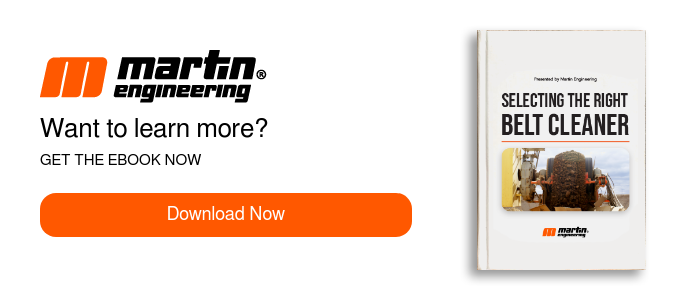When To Choose Single/Multiple Belt Cleaner Blade Design
Advanced Blade Designs and Material for Belt Cleaning
A multiple-blade design utilizes individual spring or elastomer support for each cleaning blade to maintain proper tension against the belt. This setup allows each blade to exert lower pressure than the total applied force from the tensioning device. In practical terms, narrow blades can better conform to the belt surface, adjust to its contours, and flex away from the belt during splice passages, returning easily to their cleaning position. Compared to a single, solid blade, this design offers greater efficiency and safety for both the cleaner and the belt. 
Recent advancements in urethane have enhanced the ability of single-blade primary cleaners to maintain consistent contact with the belt.
Cleaner blades are crafted from a variety of materials, ranging from rubber and urethane to mild and stainless steels. Some blades incorporate tungsten carbide inserts or fillers like glass beads to bolster abrasion resistance and improve cleaning performance.
Manufacturers of cleaners have expanded their range of urethane materials to cater to specific conditions, such as increased resistance to abrasion, heat, chemicals, or humidity. Depending on the unique requirements of each application, selecting the optimal material may necessitate a comparative testing process to identify the most suitable option.
